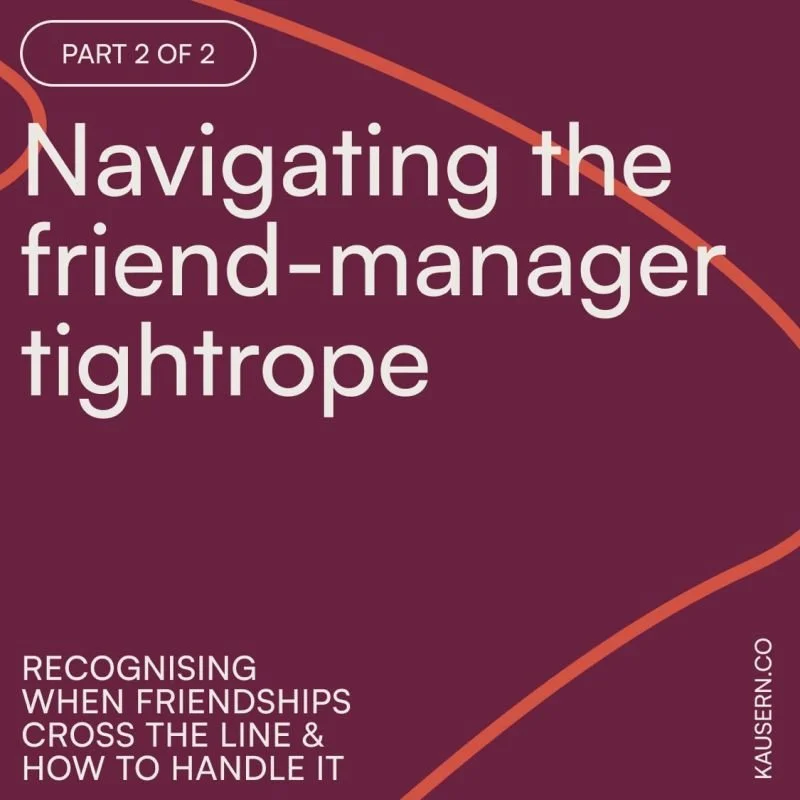Part 2: Navigating the friend-manager tightrope
⚠️ Previously, I shared a step-by-step guide in walking the friend-manager tightrope. Now let’s look into what to do if the friendship crosses the line.
🚫 Signs that your staff have crossed the boundaries:
- Disregard for professional hierarchies:
E.g. Disregarding the established chain of command.
- Excessive familiarity:
Continuously treating the manager more like a peer than a manager
E.g. Using informal language, sharing too many personal details, behaving in a manner that goes beyond the professional context.
- Testing limits:
Consistently pushing the boundaries of acceptable behaviour
E.g. Challenging your authority, ignoring policies, engaging in activities that are disruptive to the work environment.
- Inappropriate requests:
Making personal requests that go beyond the professional realm
E.g. Borrowing money, seeking undue favours, expecting special treatment
- Gossip and confidentiality breaches:
E.g. Sharing of sensitive information or spreading rumours
💢 𝐇𝐨𝐰 𝐝𝐨 𝐰𝐞 𝐩𝐫𝐨𝐦𝐩𝐭𝐥𝐲 𝐚𝐝𝐝𝐫𝐞𝐬𝐬 𝐭𝐡𝐢𝐬 𝐬𝐨𝐫𝐭 𝐨𝐟 𝐛𝐞𝐡𝐚𝐯𝐢𝐨𝐮𝐫?
Step 1: Observation and documentation:
Observe if team members continuously demonstrate the aforementioned behaviours. Document these specific instances to provide concrete evidence when addressing this issue with them.
Step 2: Bring it up during regular check-ins:
It’s important for managers to maintain regular check-ins with team members to foster open communication. During these discussions, make it clear that while you value the friendship, you would like to address their certain unacceptable behaviour. Gauge their sentiment, listen for concerns, and be attuned to any signs of discomfort or dissatisfaction.
Step 3: Reinforce expectations:
Reemphasize the agreed expectations. If necessary, bring up company policies related to their behaviour. Reinforce the importance of maintaining a respectful and professional work environment and remind them of the consequences of violating them.
Step 4: Seek guidance when necessary:
If the situation becomes challenging to handle, seek guidance from HR or higher-ups that can provide useful insights.
Step 5: Learn from experience:
Every managerial-friend relationship is unique. Learn from your experiences, both positive and negative. Use these lessons to refine your approach.
When addressing boundary issues with your team, it’s not just what you say but HOW you say it that makes a difference. Approaching these conversations with empathy and a commitment to mutual understanding can turn a challenging situation into an opportunity for growth on both sides.
Remember, regular communication, clear expectations, and swift intervention can contribute to a harmonious and effective work environment.

